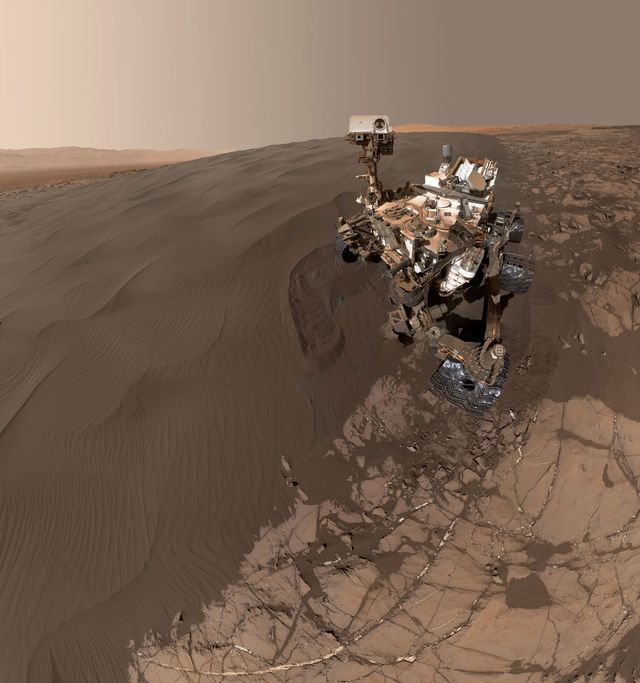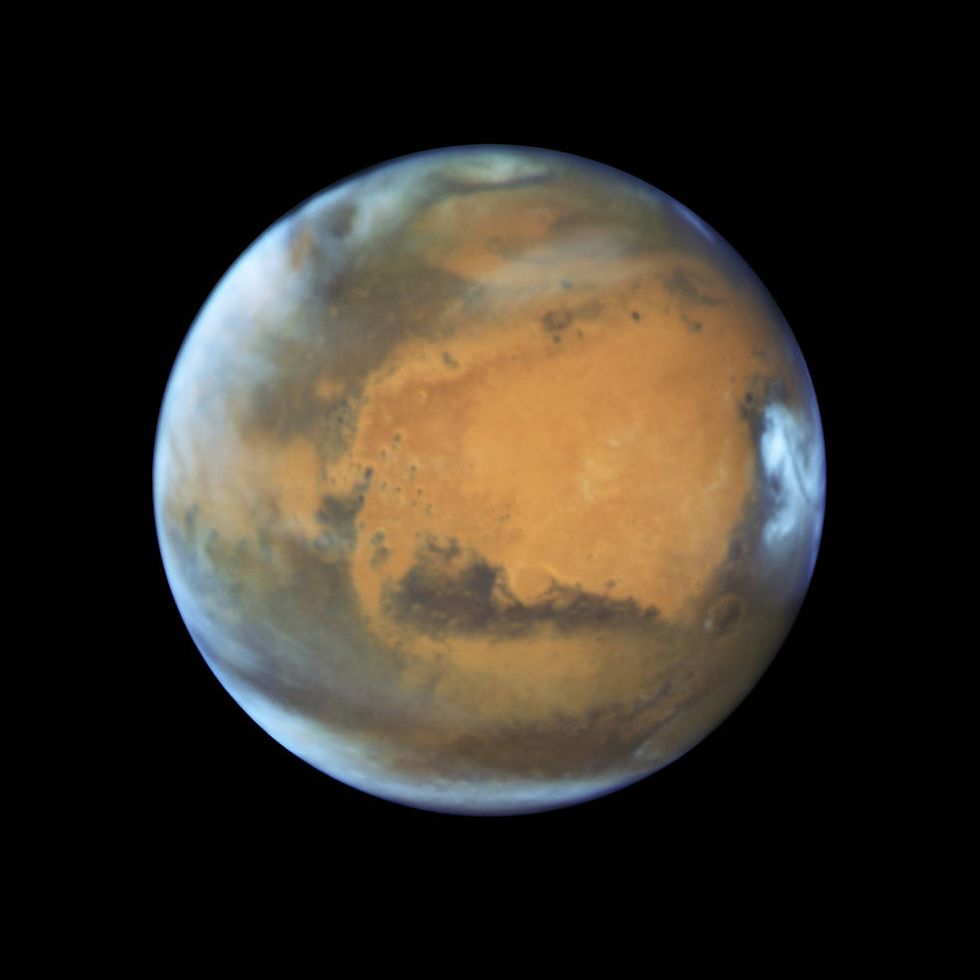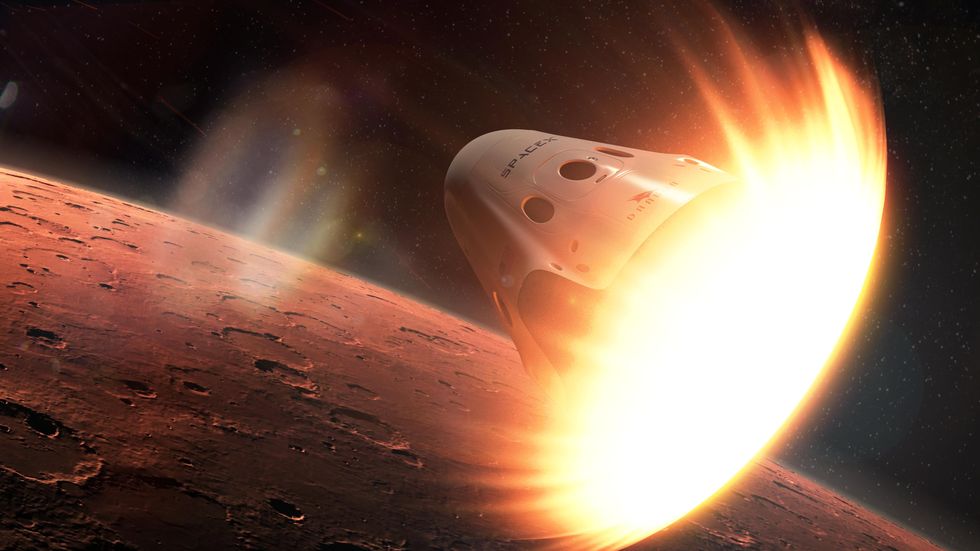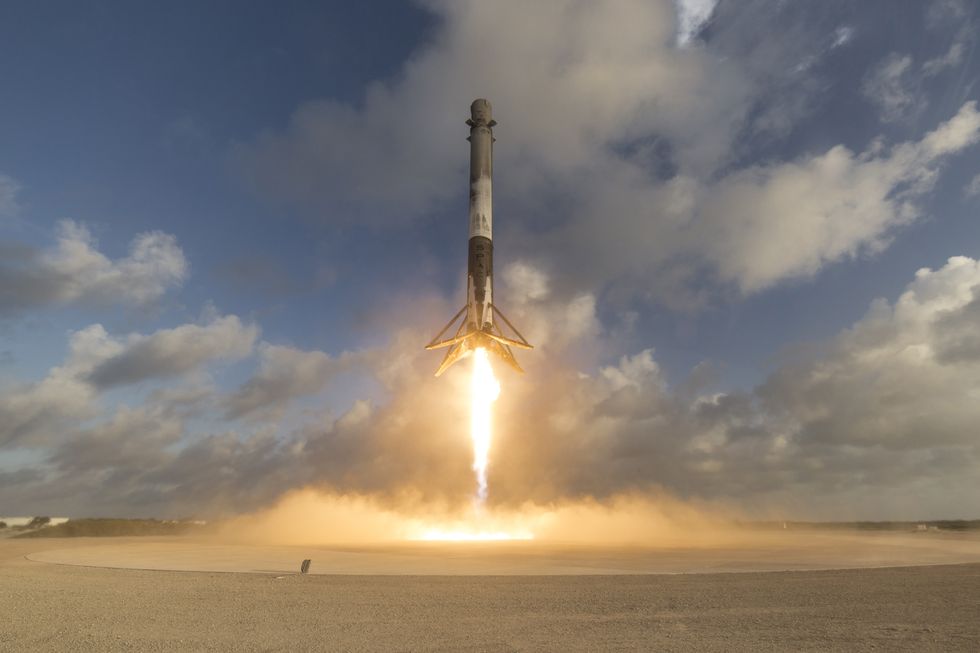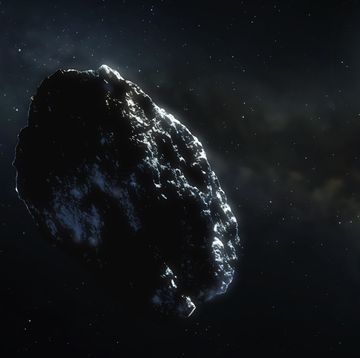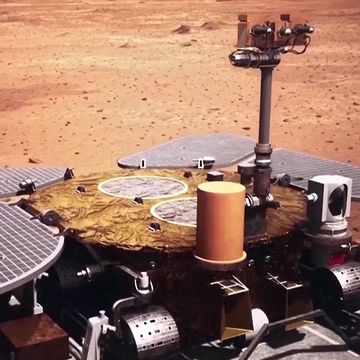NASA's Journey to Mars might be officially dead. That is, the agency doesn't seem likely to land an astronaut on the Red Planet in the 2030s, and NASA's associate administrator for human exploration, William H. Gerstenmaier, recently said that NASA does not have the funding for a crewed Mars mission in the current timeline. Gerstenmaier also addressed the underlying problem: The agency just doesn't know how to land something as heavy as a crewed spacecraft on Mars.
"I can't put a date on humans on Mars, and the reason really is the other piece is, at the budget levels we described, this roughly two percent increase, we don't have the surface systems available for Mars," said Gerstenmaier at a meeting of the American Institute for Aeronautics and Astronautics. "And that entry, descent, and landing is a huge challenge for us for Mars."
The Grasp of the Ghoul
Missions to Mars have such a high failure rate that in 1997, American journalist and historian Donald Lloyd Neff surmised in Time magazine that there must be a Great Galactic Ghoul living on Mars that subsides on human spacecraft. Indeed, of 16 attempted spacecraft landings on Mars since 1970, only 7 have been successful, all carried out by NASA's Jet Propulsion Laboratory. The European Space Agency crashed a would-be lander into Mars in October of last year.
In April, Popular Mechanics spoke to NASA transition team member and CU astrophysics professor Jack Burns, who said that due to the challenges of landing, "I think it's going to be a bit longer than the 2030s before we can land astronauts [on Mars] safely."
The problem, explained Burns, is that Mars's atmosphere is as bad as it can possibly be for landing spacecraft. Mars has an atmospheric pressure of less than one percent of Earth's atmosphere. That's just thick enough that you need a heavy heat shield made of something like titanium or composites to keep the spacecraft from burning up on entry. The atmosphere is far too thin, however, to brake sufficiently for landing using parachutes alone.
In the past, NASA has used parachutes to brake as much as possible, then let the spacecraft slam into the planet with sufficient inflated air bags to bounce along the Martian surface—which is how the agency landed the Opportunity rover. The most sophisticated Mars landing, however, was the so-called "sky crane" used to deposit the Curiosity rover on the surface.
The sky crane system involved a standard capsule with a heat shield and a parachute. Once the capsule slowed enough to avoid significant friction heating, it jettisoned the heavy heat shield. Then as the spacecraft approached the surface of the Red Planet, still essentially in freefall, Curiosity, strapped to the sky crane, jettisoned the capsule and parachute. The sky crane then fired up retrorockets to descend the rest of the way, and when it was hovering just feet above the surface, it lowered Curiosity on a cable. When Curiosity settled softly into the Martian soil, the sky crane juiced its rockets and flew away to impact the planet elsewhere, its life's work complete.
But here's the thing: The entire Curiosity landing system—capsule, sky crane, and all—had a mass of less than two metric tons. A crewed spacecraft would need to be somewhere between 10 and 15 metric tons. No one knows how to land something that big on Mars. What's more, NASA's Space Launch System Rocket that is intended to launch astronauts to Mars continues to be delayed, and a mission to orbit the Red Planet will certainly come before a landing. The last thing NASA wants to do is deliver the first Martian astronauts straight into the lair of the Great Galactic Ghoul.
Can SpaceX Do It?
SpaceX has never been shy about the fact that its ultimate goal is to facilitate the colonization of Mars. It says right on rocket maker's website, "The company was founded in 2002 to revolutionize space technology, with the ultimate goal of enabling people to live on other planets."
SpaceX is currently working to outfit a Dragon spacecraft to land on Mars in 2020. In fact, the company is toying with the idea of sending two Dragons for redundancy's sake. It's hard to know exactly what SpaceX's Red Dragon (the Mars variant) will look like, but it could be as heavy a six metric tons, which would make it the heaviest object ever landed on Mars if SpaceX succeeds.
Landing on Mars is notoriously hard, but there is reason to think SpaceX could pull it off. The company is, after all, the only institution in the world that has ever landed an orbital class rocket after launch, and nobody is on the verge of repeating the feat.
Dealing with the thin Martian atmosphere will present a new challenge for SpaceX, and the company might crash on its first attempts, just as it did with its rocket landings. But even if SpaceX don't achieve a soft landing in 2020, Elon Musk will likely keep sending Dragon spacecraft to Mars until one successfully lands. That said, a Mars spacecraft will require the Falcon Heavy rocket with three first stage boosters, and SpaceX has yet to fly that bird. The first Falcon Heavy launch is tentatively scheduled for later this year, though it has been delayed many times.
Could SpaceX land a person on Mars by the end of the 2030s? It's unlikely, but if Elon Musk's space startup conducts the first flight of the Falcon Heavy by the end of the year, and flies two paying customers around the moon before the end of 2018 like it plans to, then who knows.
Until then, we can look forward to the arrival of the Mars 2020 rover, a mission that should test some fundamental technologies for life support systems on Mars such as pulling oxygen out of the carbon dioxide of the Martian atmosphere. Astronauts will then fly around Mars, but even that mission is years out as we continue studying the effects of long-term spaceflight. Eventually, though, someone will descend to the red sands of Mars to confront the ghoul that lurks there.

Jay Bennett is the associate editor of PopularMechanics.com. He has also written for Smithsonian, Popular Science and Outside Magazine.
